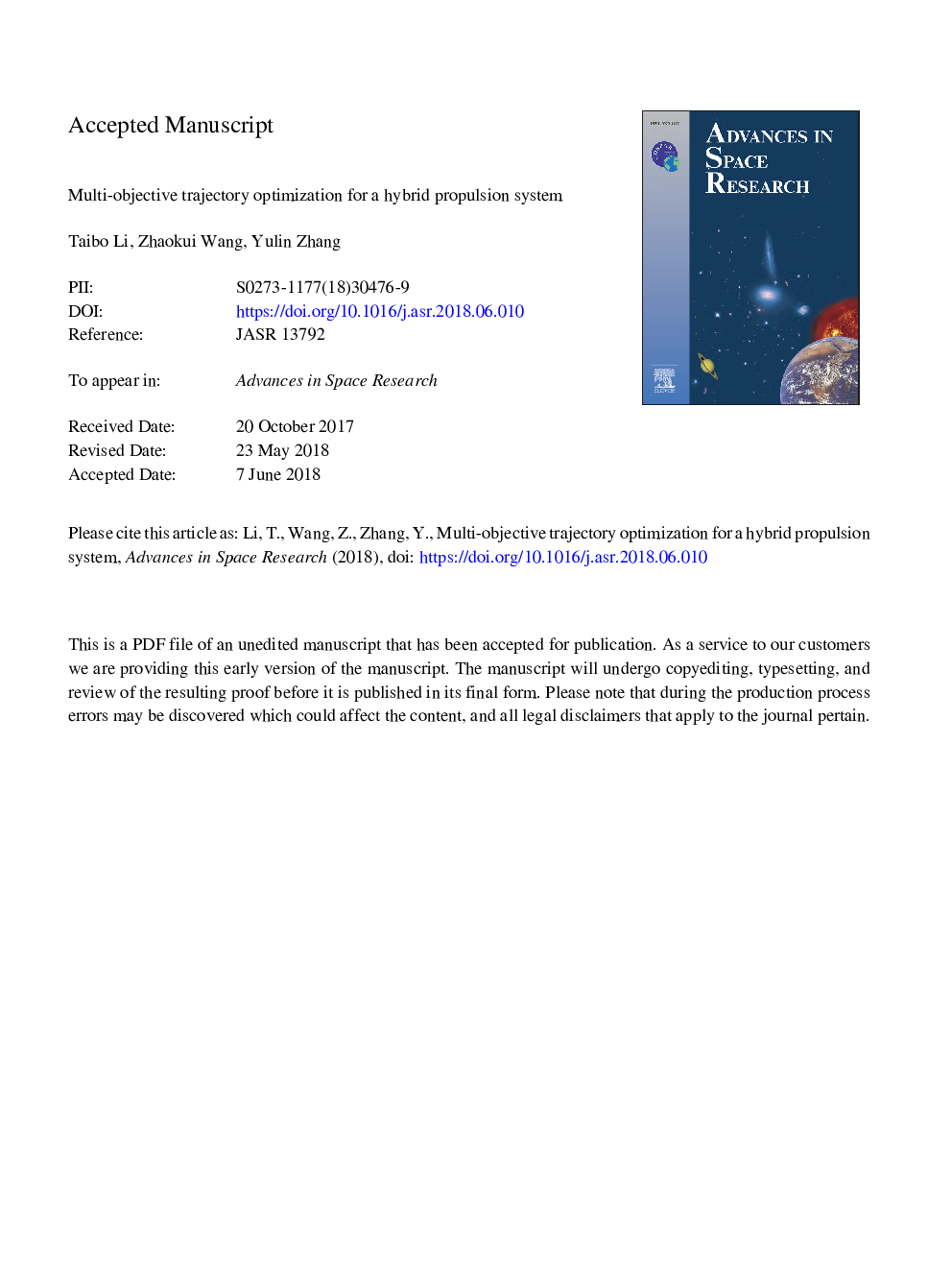| Article ID | Journal | Published Year | Pages | File Type |
|---|---|---|---|---|
| 8131658 | Advances in Space Research | 2018 | 21 Pages |
Abstract
It is attractive to use a hybrid propulsion system (HPS) consisting of solar electric propulsion (SEP) and solar radiation pressure (SRP) in interplanetary and near-Earth missions. Compared with the equivalent pure sail and pure SEP trajectories, HPS can reduce fuel consumption and transfer time. A multi-objective optimization model for the three-dimensional rendezvous mission of hybrid propulsion system is established in this paper. The optimization index is defined as a weighted sum of transfer time and the fuel consumption. Solutions with the bang-bang thrust profile are obtained under the specific mission constraints of time and fuel consumption. The influence of weights on the optimization results is discussed, and a reasonable weight range is given based on the magnitude analysis. By combining the homotopy approach with time-optimal solar sail trajectory, the initial value of the covariates are well estimated. Numerical simulations are performed both on Earth-2000SG344 and Earth-Apophis rendezvous. The results indicate that the proposed method is advantageous to obtain solutions with different mission time and fuel consumption flexibility.
Keywords
Related Topics
Physical Sciences and Engineering
Earth and Planetary Sciences
Space and Planetary Science
Authors
Taibo Li, Zhaokui Wang, Yulin Zhang,
